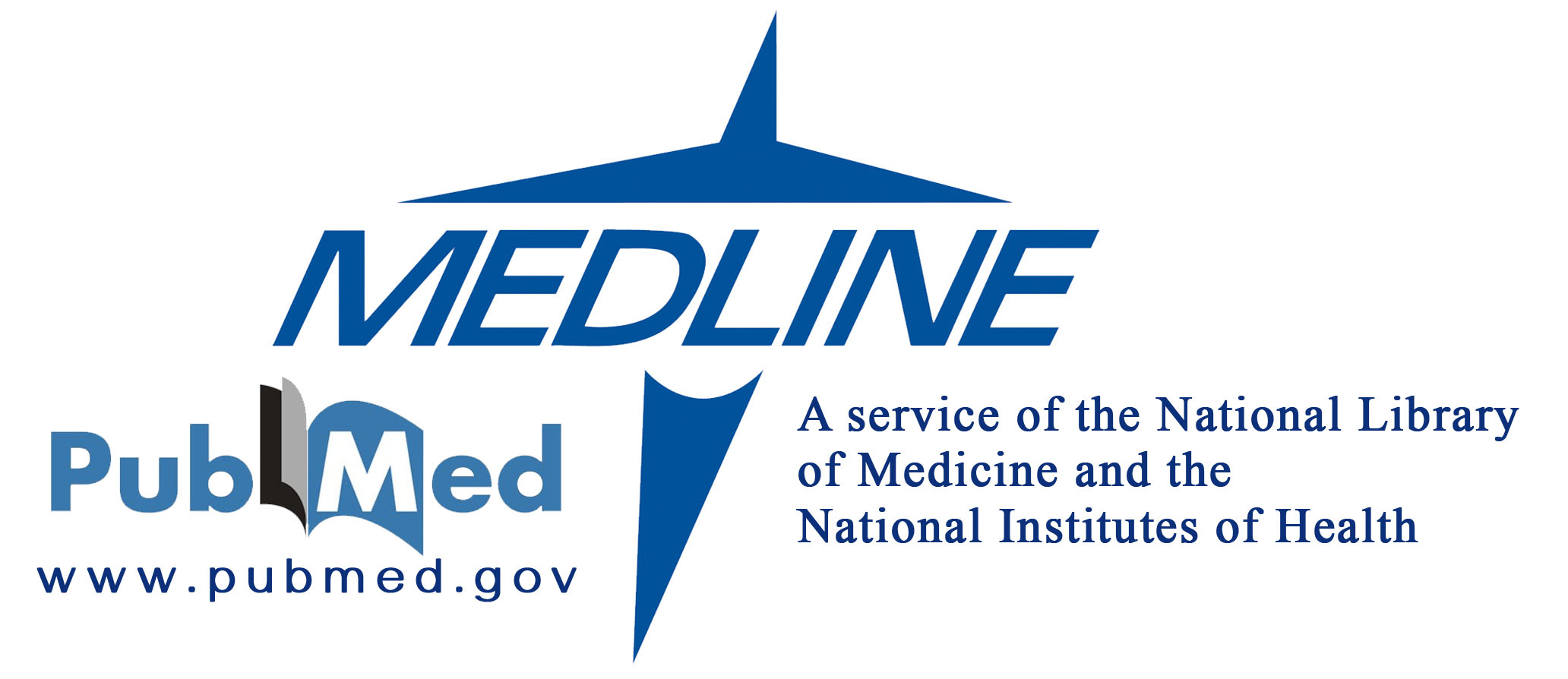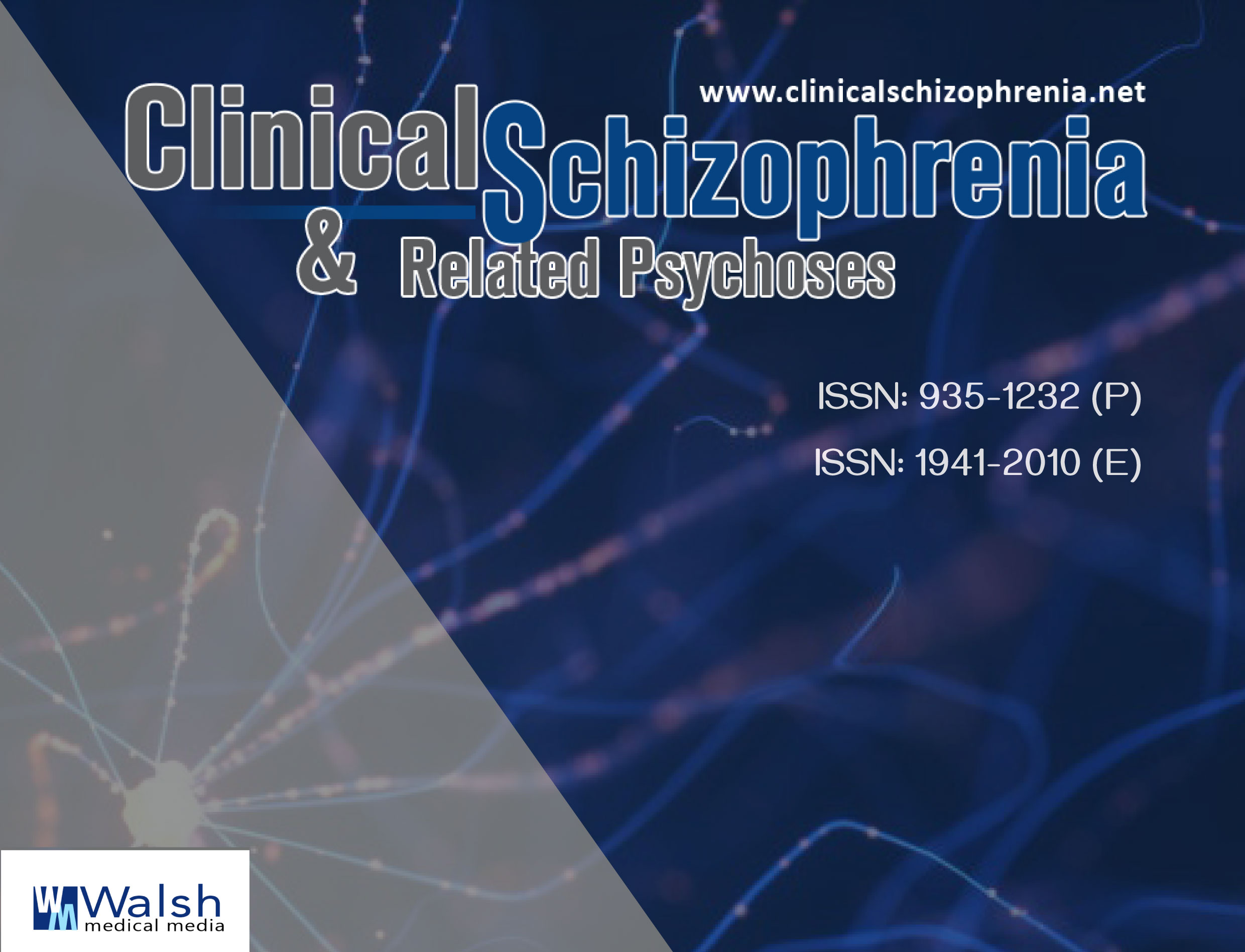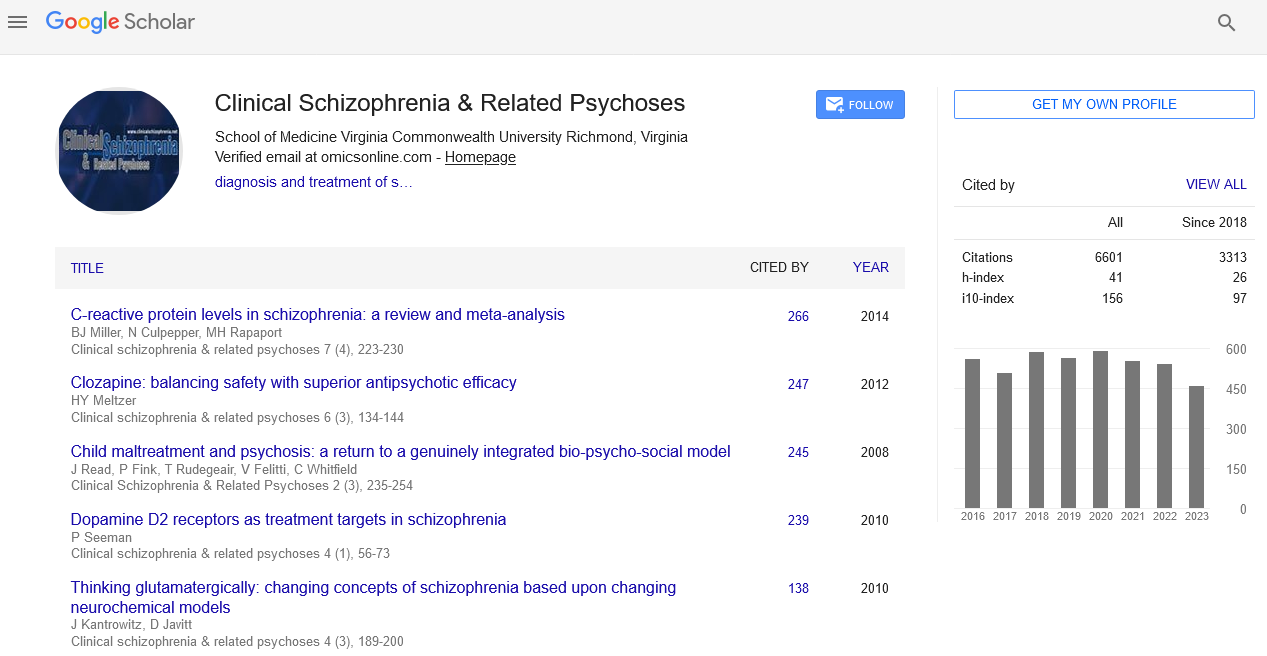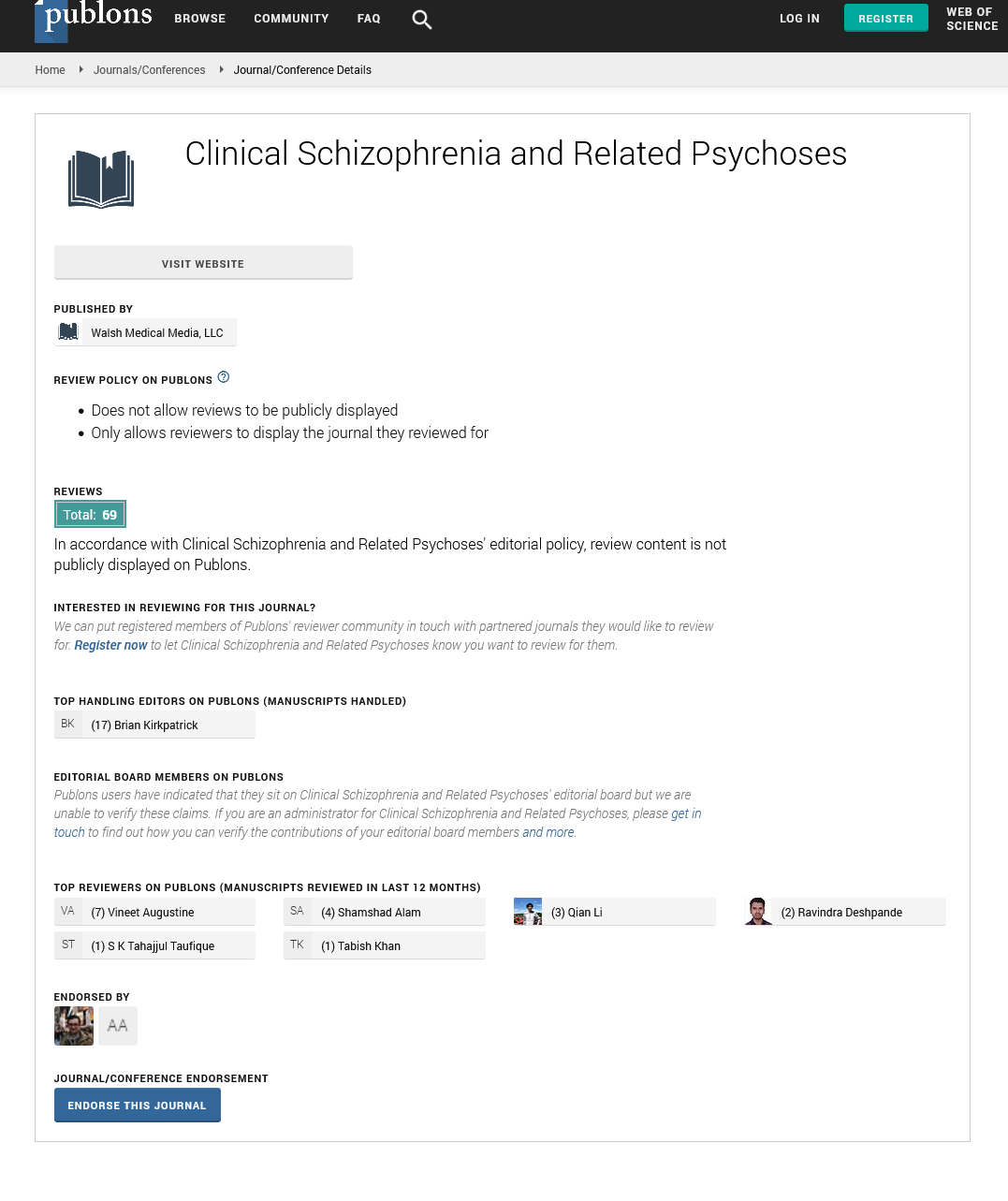Brief Report - Clinical Schizophrenia & Related Psychoses ( 2021) Volume 0, Issue 0
The Oxidative Stress State In Hypertension Patients With Type 2 Diabetes Mellitus
Ola Kamal A Alkadir1*, Mona N Al-Terehi2, Bayader M Abd Al-Kadim2, Thulfeqar Ahmed Hamza3 and Yasir Salam Karim42Department of Science, Babylon University, Babylon, Iraq
3Department of Medical Laboratory, AL-Mustaqbal University College, Hillah, Iraq
4Department of Medical Sciences, Al-Manara College, Baghdad, Iraq
Ola Kamal A Alkadir, Department of Science, Al-Nisour University, Baghdad, Iraq, Email: mohammed.a.medical.lab@nuc.edu.iq
Received: 01-Oct-2021 Accepted Date: Oct 15, 2021 ; Published: 22-Oct-2021, DOI: 10.3371/CSRP.AOMT.102221
Abstract
Oxidative stress have potential role in some disease like diabetes mellitus and the long period of oxidative exposure led to disease complications like hypertension and cardiac disease, the present study conducted to evaluated oxidative stress state in DM2 patient with hypertension to detect the role of OS in diabetic complication, Reactive Oxygen Species (ROS) and TAOal antioxidant (TAO) levels were detected in patients serum, the results show that the hypertension were observed in high age than other group in non-significant differences (P=0.109), the BMI was slightly varied between groups at P (0.574). Non-significant differences appeared in FBG and HBA1c with slightly decreasing at P=0.780 and P=0.068 respectively. Significant differences (P=0.000) for SYS and DIA were observed; the TAO showed low decrement in patients DM+HP and slightly elevation in ROS in same group in non-significant differences (P=0.676, 0.736) respectively. The correlation coefficient between groups shows that the ROS non-significant weak correlated with SYS and weak inverse with DIA in DM group. While in DM+HP group; non-significant inverse weak correlation with SYS and DIA were observed. TAO was weak invers correlated with SYS and weak positive correlated with DIA in DM and DM+HP, significant invers correlation observed between TAO and ROS in both groups, the present study concluded that the slightly ROS elevation and slightly TAO decrement were non-significant related with hypertension in DM patients.
Keywords
Oxidative Stress • Hypertension • Diabetes Mellitus
Introduction
The hypertension is one of the diabetic complications, about 75% of DM patients suffered from hypertension and the long period of HP may lead to other health problems like stroke, coronary heart disease, heart failure, and peripheral vascular disease [1-3].
Multifactor can be led to HP like chronic inflammation, Obesity, and oxidative stress, the insulin resistance also one of the HP etiology, researches proved the unbalanced oxidative-redox state considered as risk factors in HP [4-6]. Oxidative stress recorded in high rates in different populations because of variation in lifestyle, food consuming, and sleep time and smoker habit, oxidative stress result from unbalanced between free radical production and scavenger by antioxidant molecules and these were effected by previous factors [7].
The present study aims to evaluation the oxidative stress by detection ROS and TAO in diabetes mellitus type 2 patients with and without hypertension.
Methodology
Sample collection and study sitting
A cross match study was conducted to detection the oxidative stress state in diabetes mellitus patients with and without hypertension, 21 sample of patients suffer from diabetes mellitus type 2 without hypertension and 16 patients with hypertension, all patients were clinically diagnosis by specialist physicians with clinical biomarker, blood samples and data were collected according to ethical approval of ministry of environment and health in Iraq. Serum samples were separated and store in -20˚C.
Biomarker estimation: Fasting Blood Glucose (FBG), Glycated hemoglobin A1c, TAOal antioxidant, and Reactive oxygen species were detected by routine lab methods, in addition to systolic and diastolic of blood pressure.
Statistical analysis: the results represented as a mean ± stander error, independent t test was used to detection differences between groups at p<0.05, the correlation coefficient also detected.
Results and Discussion
The present finding that deal with the oxidative stress state in DM with and without hypertension are clarified in Table 1, results show that the hypertension were observed in high age (52.81 ± 2.61) than DM group (46.52 ± 2.67) in non-significant differences (P=0.109), the BMI was slightly varied between groups (30.82 ± 1.21, 29.84 ± 1.17) for DM and DM+HP respectively at P (0.574). Non-significant differences appeared in FBG and HBA1c with slightly decreasing at P (0.780 and 0.068) respectively. Significant differences (P=0.000) for SYS and DIA were observed; the TAO showed low decrement in patients DM+HP and slightly elevation in ROS in same group in non-significant differences (P=0.676, 0.736) respectively.
| Variables | DM | DM+HP | t test | sig |
|---|---|---|---|---|
| Age | 46.52 ± 2.67 | 52.81 ± 2.61 | 1.64 | 0.109 |
| BMI | 30.82 ± 1.21 | 29.84 ± 1.17 | 0.568 | 0.574 |
| FBG | 232.80 ± 25.43 | 221.93 ± 29.15 | 0.281 | 0.780 |
| HBA1c | 9.13 ± .39 | 8.04 ± 0.40 | 1.881 | 0.068 |
| SYS | 12.19 ± 0.14 | 14.75 ± 0.34 | 7.379 | 0.000 |
| DIA | 7.85 ± 0.07 | 9.12 ± 0.18 | 6.871 | 0.000 |
| TAO | 11.13 ± 0.75 | 10.71 ± 0.58 | 0.422 | 0.676 |
| ROS | 105.59 ± 13.54 | 111.38 ± 12.55 | 0.444 | 0.736 |
The correlation coefficient between groups were detected, the ROS non-significant weak correlated with SYS and weak inverse with DIA in DM group. While in DM+HP group; non-significant inverse weak correlation with SYS and DIA were observed. TAO was weak invers correlated with SYS and weak positive correlated with DIA in DM and DM+HP, significant invers correlation observed between TAO and ROS in both group.
The oxidative-redox is a system included free radicals and antioxidant molecules to balance the oxidative-redox state in the body, the long period of unbalanced of this system would lead to oxidative stress that contributed in diseases incidence and developments [7]. The present study shows that the DM has high level of ROS and TAO levels and this were proved by other studies (Table 2).
| Variables | ROS DM |
ROS DM+HP |
TAO DM |
TAO DM+HP |
||||
|---|---|---|---|---|---|---|---|---|
| r | P | r | P | r | P | r | P | |
| SYS | 0.267 | 0.243 | -0.242 | 0.366 | -0.211 | 0.358 | 0.284 | 0.287 |
| DIA | -0.281 | 0.217 | -0.141- | 0.602 | 0.228 | 0.320 | 0.199 | 0.460 |
| ROS | - | - | - | - | -0.850** | 0.000 | -0.855** | 0.000 |
| Note:** ROS and TAO levels | ||||||||
The pathophysiological and complications of DM which causes ROS that production by different mechanisms, 1; the pathway of polyol flux, 2; excessive formation advanced glycation end products, 3; high level of receptor expression of AGEs, 4; protein kinase C isoforms activation, 5; hexosamine pathway over activity, in addition to inactivation of two critical anti-atherosclerotic enzymes; the endothelial nitric oxide synthase and prostacyclin synthase [8].
the oxidative stress contributed in the hypertension incidence by different mechanisms included vasodilator nitric oxide quenching [9], vasoconstrictor lipid peroxidation products generation[10], tetrahydrobiopterin depletion, endothelial cells and vascular smooth muscle cells damage, intracellular free calcium level elevation, endothelial permeability increased [11], inflammation and growth signaling events stimulation [12-14]. The vascular oxidative stress can be stimulated hypertension [15], On the other hand it is unclear whether ROS initiate the development of hypertension [16]. The our results deal with Lassègue et al. and Rhian et al. that proved strong association between hypertension and oxidative stress. The long period of oxidative stress in DM patients contributed in complications, thus it should be treated with supplements, antioxidant foods and drugs [17-19].
Conclusion
The current findings concluded that the slightly ROS elevation and the slightly TAO decrement were non-significant associated with hypertension in DM patients, this didn’t mean that the oxidative stress was didn’t relate to hypertension, but at least didn’t cause disturbance in ROS and TAO in diabetes patients, which suffered from unbalanced in the oxidative stress state. The correlation coefficient between groups was discovered, and the ROS was found to be weakly correlated but not significant.
References
- Adler, Amanda I, Irene M Stratton, H Andrew W Neil and John S Yudkin, et al. “Association of Systolic Blood Pressure with Macrovascular and Microvascular Complications of Type 2 Diabetes (UKPDS 36): Prospective Observational Study.” Bmj 321 (2000): 412-419.
- Yannoutsos, Alexandra, Mathieu Ahouah, Céline Dreyfuss Tubiana and Jirar Topouchian, et al. “Hemodynamic Parameters in Hypertensive Diabetic Patients.” J Hypertens 34 (2016): 1123-1131.
- Long, Amanda N and Samuel Dagogo‐Jack. “Comorbidities of Diabetes and Hypertension: Mechanisms and Approach to Target Organ Protection.” J Clin Hypertens 13 (2011): 244-251.
- Ndisang, Joseph Fomusi, Alfredo Vannacci and Sharad Rastogi. “Oxidative Stress and Inflammation in Obesity, Diabetes, Hypertension, and Related Cardiometabolic Complications.” Oxid Med Cell Longev 5 (2014): 1-4.
- A Duarte, Diego, Kamila C Silva, Mariana AB Rosales and Jose B Lopes de Faria, et al. “The Concomitance of Hypertension and Diabetes Exacerbating Retinopathy: The Role of Inflammation and Oxidative Stress.” Curr Clin Pharmacol 8 (2013): 266-277.
- Al-Terehi, Mona N, Alyaa Aziz Al-Mosawei, Zahraa H Al-Qiam and Hiader Kamil Zaidan, et al. “Angiotensin Converting Enzyme Gene Polymorphism in Hypertension Patient Detection.” Indian J Public Health Res Development 10 (2019): 1-2.
- Pizzino, Gabriele, Natasha Irrera, Mariapaola Cucinotta and Giovanni Pallio, et al. “Oxidative Stress: Harms and Benefits for Human Health.” Oxid Med Cell Longev 2017 (2017): 1-13.
- Folli, Franco, Domenico Corradi, Paolo Fanti and Alberto Davalli, et al. “The Role of Oxidative Stress in the Pathogenesis of Type 2 Diabetes Mellitus Micro-and Macrovascular Complications: A Venues for a Mechanistic-Based Therapeutic Approach.” Curr Diabetes Rev 7 (2011): 313-324.
- Vaziri, Nosratola D, Zhenmin Ni, Fariba Oveisi and Debra L Trnavsky-Hobbs. “Effect of Antioxidant Therapy on Blood Pressure and NO Synthase Expression in Hypertensive Rats.” Hypertension 36 (2000): 957-964.
- Cracowski, Jean-Luc, Thierry Durand and Germain Bessard. “Isoprostanes as a Biomarker of Lipid Peroxidation in Humans: Physiology, Pharmacology and Clinical Implications.” Trends Pharmacol Sci 23 (2002): 360-366.
- McIntyre, Martin, David F Bohr and Anna F Dominiczak. “Endothelial Function in Hypertension: The Role of Superoxide Anion.” Hypertension 34 (1999): 539-545.
- Zalba, Guillermo, Gorka San José, María U Moreno and María A Fortuño, et al. “Oxidative Stress in Arterial Hypertension: Role of NAD (P) H Oxidase.” Hypertension 38 (2001): 1395-1399.
- Chen, Xin, Rhian M Touyz, Jeong Bae Park and Ernesto L Schiffrin. “Antioxidant Effects of Vitamins C and E are Associated with Altered Activation of Vascular NADPH Oxidase and Superoxide Dismutase in Stroke-prone SHR.” Hypertension 38 (2001): 606-611.
- Schiffrin, Ernesto L. “Beyond Blood Pressure: The Endothelium and Atherosclerosis Progression.” Am J Hypertens15 (2002): 115S-122S.
- Virdis, Agostino, Mario Fritsch Neves, Farhad Amiri and Emilie Viel, et al. “Spironolactone Improves Angiotensin-Induced Vascular Changes and Oxidative Stress.” Hypertension 40 (2002): 504-510.
- Grossman, Ehud. “Does Increased Oxidative Stress Cause Hypertension?” Diabetes care 31 (2008): S185-S189.
- Hsu, Dur-Zong, Yi-Wei Chen, Pei-Yi Chu and Srinivasan Periasamy, et al. “Protective Effect of 3, 4-Methylenedioxyphenol (sesamol) on Stress-Related Mucosal Disease in Rats.” Biomed Res Int 2013 (2013): 1-2.
- Lassègue, Bernard and Kathy K Griendling. “Reactive Oxygen Species in Hypertension: An Update.” Am J Hypertens 17 (2004): 852-860.
- Touyz, Rhian M, Francisco J Rios, Rhéure Alves-Lopes and Karla B Neves, et al. “Oxidative Stress: A Unifying Paradigm in Hypertension.” Can J Cardiol 36 (2020): 659-670.
Citation: Alkadir, A Ola Kamal, Mona N Al‐Terehi, Bayader M Abd Al‐Kadim and Thulfeqar Ahmed Hamza, et al. “The Oxidative Stress State in Hypertension Patients with Type 2 Diabetes Mellitus.&rdquo Clin Schizophr Relat Psychoses 15S (2021). DOI: 10.3371/CSRP.AOMT.102221.
Copyright: © 2021 Alkadir OKA, et al. This is an open-access article distributed under the terms of the Creative Commons Attribution License, which permits unrestricted use, distribution, and reproduction in any medium, provided the original author and source are credited. This is an open access article distributed under the terms of the Creative Commons Attribution License, which permits unrestricted use, distribution, and reproduction in any medium, provided the original work is properly cited.






